RBS 2012 Annual Report Download - page 362
Download and view the complete annual report
Please find page 362 of the 2012 RBS annual report below. You can navigate through the pages in the report by either clicking on the pages listed below, or by using the keyword search tool below to find specific information within the annual report.-
 1
1 -
 2
2 -
 3
3 -
 4
4 -
 5
5 -
 6
6 -
 7
7 -
 8
8 -
 9
9 -
 10
10 -
 11
11 -
 12
12 -
 13
13 -
 14
14 -
 15
15 -
 16
16 -
 17
17 -
 18
18 -
 19
19 -
 20
20 -
 21
21 -
 22
22 -
 23
23 -
 24
24 -
 25
25 -
 26
26 -
 27
27 -
 28
28 -
 29
29 -
 30
30 -
 31
31 -
 32
32 -
 33
33 -
 34
34 -
 35
35 -
 36
36 -
 37
37 -
 38
38 -
 39
39 -
 40
40 -
 41
41 -
 42
42 -
 43
43 -
 44
44 -
 45
45 -
 46
46 -
 47
47 -
 48
48 -
 49
49 -
 50
50 -
 51
51 -
 52
52 -
 53
53 -
 54
54 -
 55
55 -
 56
56 -
 57
57 -
 58
58 -
 59
59 -
 60
60 -
 61
61 -
 62
62 -
 63
63 -
 64
64 -
 65
65 -
 66
66 -
 67
67 -
 68
68 -
 69
69 -
 70
70 -
 71
71 -
 72
72 -
 73
73 -
 74
74 -
 75
75 -
 76
76 -
 77
77 -
 78
78 -
 79
79 -
 80
80 -
 81
81 -
 82
82 -
 83
83 -
 84
84 -
 85
85 -
 86
86 -
 87
87 -
 88
88 -
 89
89 -
 90
90 -
 91
91 -
 92
92 -
 93
93 -
 94
94 -
 95
95 -
 96
96 -
 97
97 -
 98
98 -
 99
99 -
 100
100 -
 101
101 -
 102
102 -
 103
103 -
 104
104 -
 105
105 -
 106
106 -
 107
107 -
 108
108 -
 109
109 -
 110
110 -
 111
111 -
 112
112 -
 113
113 -
 114
114 -
 115
115 -
 116
116 -
 117
117 -
 118
118 -
 119
119 -
 120
120 -
 121
121 -
 122
122 -
 123
123 -
 124
124 -
 125
125 -
 126
126 -
 127
127 -
 128
128 -
 129
129 -
 130
130 -
 131
131 -
 132
132 -
 133
133 -
 134
134 -
 135
135 -
 136
136 -
 137
137 -
 138
138 -
 139
139 -
 140
140 -
 141
141 -
 142
142 -
 143
143 -
 144
144 -
 145
145 -
 146
146 -
 147
147 -
 148
148 -
 149
149 -
 150
150 -
 151
151 -
 152
152 -
 153
153 -
 154
154 -
 155
155 -
 156
156 -
 157
157 -
 158
158 -
 159
159 -
 160
160 -
 161
161 -
 162
162 -
 163
163 -
 164
164 -
 165
165 -
 166
166 -
 167
167 -
 168
168 -
 169
169 -
 170
170 -
 171
171 -
 172
172 -
 173
173 -
 174
174 -
 175
175 -
 176
176 -
 177
177 -
 178
178 -
 179
179 -
 180
180 -
 181
181 -
 182
182 -
 183
183 -
 184
184 -
 185
185 -
 186
186 -
 187
187 -
 188
188 -
 189
189 -
 190
190 -
 191
191 -
 192
192 -
 193
193 -
 194
194 -
 195
195 -
 196
196 -
 197
197 -
 198
198 -
 199
199 -
 200
200 -
 201
201 -
 202
202 -
 203
203 -
 204
204 -
 205
205 -
 206
206 -
 207
207 -
 208
208 -
 209
209 -
 210
210 -
 211
211 -
 212
212 -
 213
213 -
 214
214 -
 215
215 -
 216
216 -
 217
217 -
 218
218 -
 219
219 -
 220
220 -
 221
221 -
 222
222 -
 223
223 -
 224
224 -
 225
225 -
 226
226 -
 227
227 -
 228
228 -
 229
229 -
 230
230 -
 231
231 -
 232
232 -
 233
233 -
 234
234 -
 235
235 -
 236
236 -
 237
237 -
 238
238 -
 239
239 -
 240
240 -
 241
241 -
 242
242 -
 243
243 -
 244
244 -
 245
245 -
 246
246 -
 247
247 -
 248
248 -
 249
249 -
 250
250 -
 251
251 -
 252
252 -
 253
253 -
 254
254 -
 255
255 -
 256
256 -
 257
257 -
 258
258 -
 259
259 -
 260
260 -
 261
261 -
 262
262 -
 263
263 -
 264
264 -
 265
265 -
 266
266 -
 267
267 -
 268
268 -
 269
269 -
 270
270 -
 271
271 -
 272
272 -
 273
273 -
 274
274 -
 275
275 -
 276
276 -
 277
277 -
 278
278 -
 279
279 -
 280
280 -
 281
281 -
 282
282 -
 283
283 -
 284
284 -
 285
285 -
 286
286 -
 287
287 -
 288
288 -
 289
289 -
 290
290 -
 291
291 -
 292
292 -
 293
293 -
 294
294 -
 295
295 -
 296
296 -
 297
297 -
 298
298 -
 299
299 -
 300
300 -
 301
301 -
 302
302 -
 303
303 -
 304
304 -
 305
305 -
 306
306 -
 307
307 -
 308
308 -
 309
309 -
 310
310 -
 311
311 -
 312
312 -
 313
313 -
 314
314 -
 315
315 -
 316
316 -
 317
317 -
 318
318 -
 319
319 -
 320
320 -
 321
321 -
 322
322 -
 323
323 -
 324
324 -
 325
325 -
 326
326 -
 327
327 -
 328
328 -
 329
329 -
 330
330 -
 331
331 -
 332
332 -
 333
333 -
 334
334 -
 335
335 -
 336
336 -
 337
337 -
 338
338 -
 339
339 -
 340
340 -
 341
341 -
 342
342 -
 343
343 -
 344
344 -
 345
345 -
 346
346 -
 347
347 -
 348
348 -
 349
349 -
 350
350 -
 351
351 -
 352
352 -
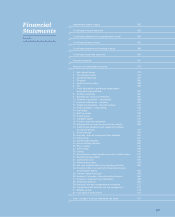 353
353 -
 354
354 -
 355
355 -
 356
356 -
 357
357 -
 358
358 -
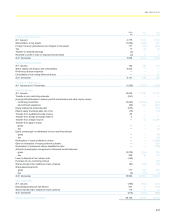 359
359 -
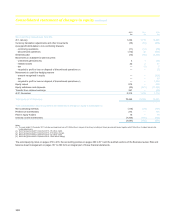 360
360 -
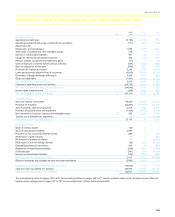 361
361 -
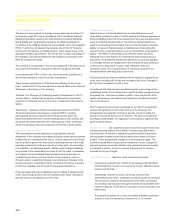 362
362 -
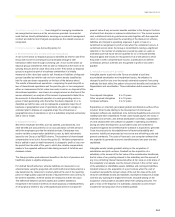 363
363 -
 364
364 -
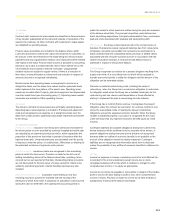 365
365 -
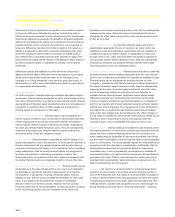 366
366 -
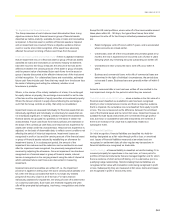 367
367 -
 368
368 -
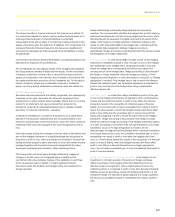 369
369 -
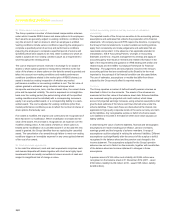 370
370 -
 371
371 -
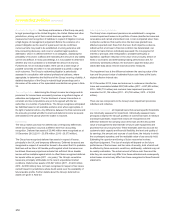 372
372 -
 373
373 -
 374
374 -
 375
375 -
 376
376 -
 377
377 -
 378
378 -
 379
379 -
 380
380 -
 381
381 -
 382
382 -
 383
383 -
 384
384 -
 385
385 -
 386
386 -
 387
387 -
 388
388 -
 389
389 -
 390
390 -
 391
391 -
 392
392 -
 393
393 -
 394
394 -
 395
395 -
 396
396 -
 397
397 -
 398
398 -
 399
399 -
 400
400 -
 401
401 -
 402
402 -
 403
403 -
 404
404 -
 405
405 -
 406
406 -
 407
407 -
 408
408 -
 409
409 -
 410
410 -
 411
411 -
 412
412 -
 413
413 -
 414
414 -
 415
415 -
 416
416 -
 417
417 -
 418
418 -
 419
419 -
 420
420 -
 421
421 -
 422
422 -
 423
423 -
 424
424 -
 425
425 -
 426
426 -
 427
427 -
 428
428 -
 429
429 -
 430
430 -
 431
431 -
 432
432 -
 433
433 -
 434
434 -
 435
435 -
 436
436 -
 437
437 -
 438
438 -
 439
439 -
 440
440 -
 441
441 -
 442
442 -
 443
443 -
 444
444 -
 445
445 -
 446
446 -
 447
447 -
 448
448 -
 449
449 -
 450
450 -
 451
451 -
 452
452 -
 453
453 -
 454
454 -
 455
455 -
 456
456 -
 457
457 -
 458
458 -
 459
459 -
 460
460 -
 461
461 -
 462
462 -
 463
463 -
 464
464 -
 465
465 -
 466
466 -
 467
467 -
 468
468 -
 469
469 -
 470
470 -
 471
471 -
 472
472 -
 473
473 -
 474
474 -
 475
475 -
 476
476 -
 477
477 -
 478
478 -
 479
479 -
 480
480 -
 481
481 -
 482
482 -
 483
483 -
 484
484 -
 485
485 -
 486
486 -
 487
487 -
 488
488 -
 489
489 -
 490
490 -
 491
491 -
 492
492 -
 493
493 -
 494
494 -
 495
495 -
 496
496 -
 497
497 -
 498
498 -
 499
499 -
 500
500 -
 501
501 -
 502
502 -
 503
503 -
 504
504 -
 505
505 -
 506
506 -
 507
507 -
 508
508 -
 509
509 -
 510
510 -
 511
511 -
 512
512 -
 513
513 -
 514
514 -
 515
515 -
 516
516 -
 517
517 -
 518
518 -
 519
519 -
 520
520 -
 521
521 -
 522
522 -
 523
523 -
 524
524 -
 525
525 -
 526
526 -
 527
527 -
 528
528 -
 529
529 -
 530
530 -
 531
531 -
 532
532 -
 533
533 -
 534
534 -
 535
535 -
 536
536 -
 537
537 -
 538
538 -
 539
539 -
 540
540 -
 541
541 -
 542
542 -
 543
543
 |
 |

360
Accounting policies
1. Presentation of accounts
The accounts are prepared on a going concern basis (see the Report of
the directors, page 347) and in accordance with International Financial
Reporting Standards issued by the International Accounting Standards
Board (IASB) and interpretations issued by the IFRS Interpretations
Committee of the IASB as adopted by the European Union (EU) (together
IFRS). The EU has not adopted the complete text of IAS 39 ‘Financial
Instruments: Recognition and Measurement’; it has relaxed some of the
standard's hedging requirements. The Group has not taken advantage of
this relaxation: its financial statements are prepared in accordance with
IFRS as issued by the IASB.
The company is incorporated in the UK and registered in Scotland and its
accounts are presented in accordance with the Companies Act 2006.
In accordance with IFRS 5, Direct Line Group has been classified as a
discontinued operation, and prior periods represented.
There are two amendments to IFRS that were effective for the Group
from 1 January 2012. They have not had a material effect on the financial
statements of the Group or the company:
‘Deferred Tax: Recovery of Underlying Assets (Amendments to IAS 12
‘Income Taxes’)’ clarifies that recognition of deferred tax should have
regard to the expected manner of recovery or settlement of the asset or
liability.
‘Disclosures - Transfers of Financial Assets (Amendments to IFRS 7
‘Financial Instruments: Disclosures’)’ replaces IFRS 7’s existing
derecognition disclosure requirements with disclosures about (a)
transferred assets that have not been derecognised in their entirety and
(b) transferred assets that have been derecognised in their entirety but
where the reporting entity has continuing involvement in those assets.
2. Basis of consolidation
The consolidated financial statements incorporate the financial
statements of the company and entities (including certain special purpose
entities) that are controlled by the Group. Control exists where the Group
has the power to govern the financial and operating policies of the entity;
generally conferred by holding a majority of voting rights. On acquisition
of a subsidiary, its identifiable assets, liabilities and contingent liabilities
are included in the consolidated accounts at their fair value. A subsidiary
is included in the consolidated financial statements from the date it is
controlled by the Group until the date the Group ceases to control it
through a sale or a significant change in circumstances. Changes in the
Group’s interest in a subsidiary that do not result in the Group ceasing to
control that subsidiary are accounted for as equity transactions.
Financial assets and financial liabilities held for trading or designated as
at fair value through profit or loss are recorded at fair value. Changes in
their fair value are recognised in profit or loss.
3. Revenue recognition
Interest income on financial assets that are classified as loans and
receivables, available-for-sale or held-to-maturity and interest expense on
financial liabilities other than those measured at fair value are determined
using the effective interest method. The effective interest method is a
method of calculating the amortised cost of a financial asset or financial
liability (or group of financial assets or liabilities) and of allocating the
interest income or interest expense over the expected life of the asset or
liability. The effective interest rate is the rate that exactly discounts
estimated future cash flows to the instrument's initial carrying amount.
Calculation of the effective interest rate takes into account fees payable
or receivable that are an integral part of the instrument's yield, premiums
or discounts on acquisition or issue, early redemption fees and
transaction costs. All contractual terms of a financial instrument are
considered when estimating future cash flows.
Financial assets and financial liabilities held for trading or designated as
at fair value through profit or loss are recorded at fair value. Changes in
fair value are recognised in profit or loss.
Commitment and utilisation fees are determined as a percentage of the
outstanding facility. If it is unlikely that a specific lending arrangement will
be entered into, such fees are taken to profit or loss over the life of the
facility otherwise they are deferred and included in the effective interest
rate on the advance.
Fees in respect of services are recognised as the right to consideration
accrues through the provision of the service to the customer. The
arrangements are generally contractual and the cost of providing the
service is incurred as the service is rendered. The price is usually fixed
and always determinable. The application of this policy to significant fee
types is outlined below.
Payment services - this comprises income received for payment services
including cheques cashed, direct debits, Clearing House Automated
Payments (the UK electronic settlement system) and BACS payments
(the automated clearing house that processes direct debits and direct
credits). These are generally charged on a per transaction basis. The
income is earned when the payment or transaction occurs. Charges for
payment services are usually debited to the customer's account monthly
or quarterly in arrears. Income is accrued at period end for services
provided but not yet charged.
Card related services - fees from credit card business include:
x Commission received from retailers for processing credit and debit
card transactions: income is accrued to the income statement as the
service is performed.
x Interchange received: as issuer, the Group receives a fee
(interchange) each time a cardholder purchases goods and services.
The Group also receives interchange fees from other card issuers
for providing cash advances through its branch and automated teller
machine networks. These fees are accrued once the transaction has
taken place.
x An annual fee payable by a credit card holder is deferred and taken
to profit or loss over the period of the service i.e. 12 months.
